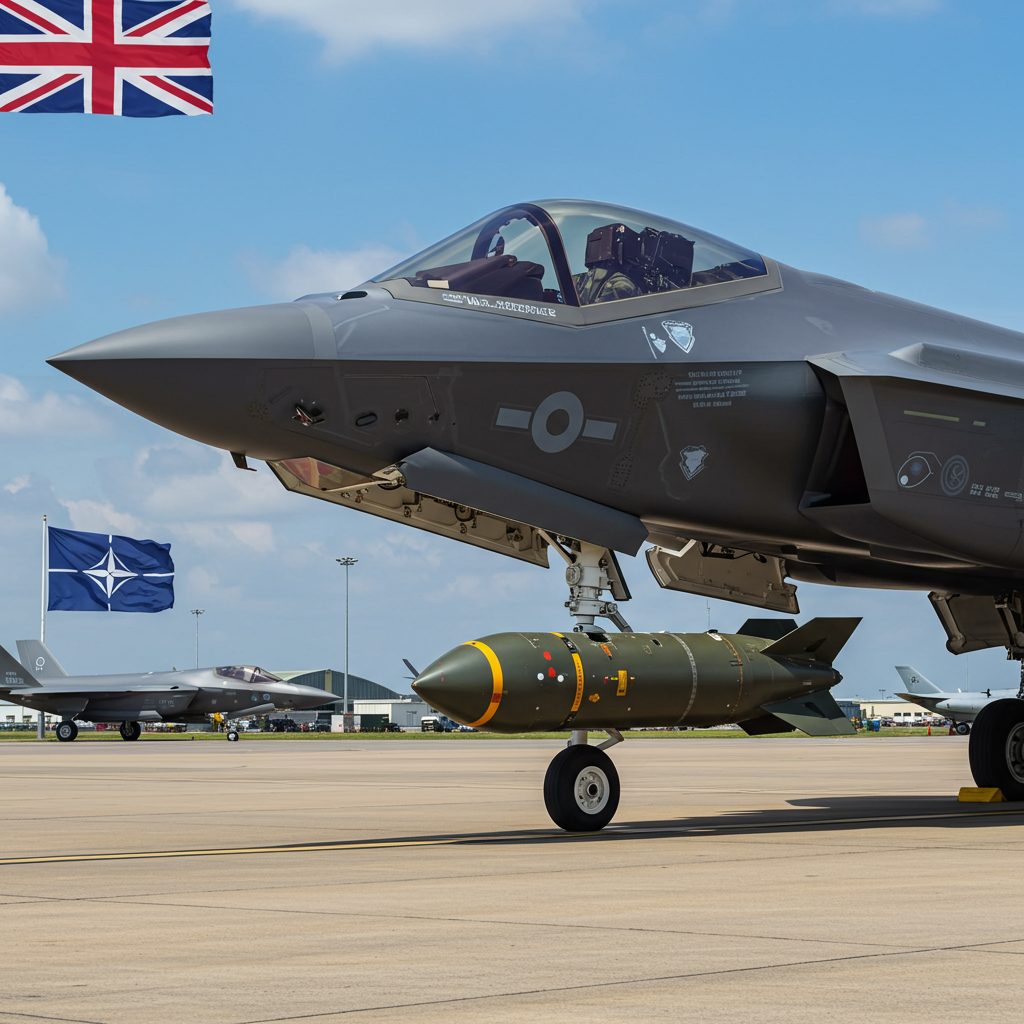Britain is set to significantly enhance its defence capabilities and formally rejoin NATO’s Dual Capable Aircraft (DCA) mission. This move, announced at a recent NATO summit, involves purchasing a squadron of F-35A fighter jets from US defence giant Lockheed Martin, capable of carrying US nuclear gravity bombs.
The acquisition represents the most substantial shift in Britain’s nuclear posture in a generation, reintroducing an air-delivered nuclear capability to the Royal Air Force (RAF) for the first time since the Cold War era, complementing the existing submarine-based Trident system. It also signals the likely return of US nuclear weapons to British soil after a 16-year absence.
Why This Nuclear Shift Now?
The decision comes amidst what officials describe as an “era of radical uncertainty” and rising global instability. Military planners increasingly see a need for more flexible, “tactical” or “sub-strategic” nuclear weapons that could theoretically be used on a battlefield, rather than solely relying on high-yield strategic weapons designed for city-destroying deterrence.
This aligns with warnings in the latest Strategic Defence Review, which highlights the need to prepare for direct threats to the UK homeland and identifies potential adversaries like Russia. The move is presented as strengthening the UK’s deterrence posture and formalizing Britain’s longstanding declaration of its nuclear deterrent to the alliance.
Globally, this step mirrors a broader trend: several major nuclear powers, including the United States, Russia, and China, are actively modernizing and potentially increasing their nuclear arsenals, contributing to concerns about a new arms race. The UK itself announced in 2021 it would increase its overall nuclear warhead stockpile limit by 40%.
How “Nuclear Sharing” Works
The arrangement for accessing US nuclear gravity bombs operates under a long-established NATO concept known as “nuclear sharing.” This framework is not unique to the UK; it mirrors agreements dating back to the Cold War with allies like Germany, Italy, Belgium, the Netherlands, and Turkey.
Under these agreements and in line with nuclear non-proliferation treaties, the nuclear weapons (in this case, the US B61-12 gravity bomb) remain owned by the United States. However, the delivery systems – the F-35A jets – will be owned and operated by the RAF, under the control of the British government.
The B61-12 is a versatile freefall gravity bomb with selectable explosive yields, ranging from 0.3 kilotons (kt) up to 50kt. To put this in perspective, the bomb dropped on Hiroshima had an estimated yield of around 15kt. While the Trident system carries warheads with significantly higher yields designed for strategic deterrence, the B61-12’s lower yield options make it suitable for a potential “substrategic” role, as military planners envision.
The Jets and Their Base
The squadron of 12 F-35A Conventional Take Off and Landing (CTOL) jets is expected to be operational by the end of the decade. They will be based at RAF Marham in Norfolk.
Choosing the F-35A variant over additional F-35B Short Take-Off and Vertical Landing (STOVL) jets (which the UK also operates from aircraft carriers) offers potential cost savings of up to 25% per aircraft. The F-35As are also expected to be used for pilot training due to their longer endurance and lower maintenance requirements, freeing up F-35Bs for carrier operations and front-line duties. In a crisis, these F-35As would take on the nuclear strike role.
The F-35 programme benefits the UK industry significantly, with much of the global supply chain based in the UK, supporting thousands of skilled jobs.
The Return of US Nuclear Bombs?
Yes, this acquisition strongly suggests that US nuclear weapons will once again be stored on British soil. The last US nuclear weapons were removed from RAF Lakenheath in Suffolk in 2008.
While the Ministry of Defence does not officially disclose the locations of nuclear storage, RAF Marham is the most likely site. It possesses older storage facilities previously used for British tactical nuclear weapons (the WE177 bomb, cancelled in 1998). Another possibility is the nearby RAF Lakenheath, a US Air Force base where storage vaults are reportedly being upgraded as part of a US program.
Operational Control and Cost
In a wartime scenario, the use of nuclear gravity bombs under the NATO sharing agreement would require significant political oversight. Explicit political approval from NATO’s nuclear planning group and authorization from both the US President and the UK Prime Minister would be necessary.
The total cost of this move is not yet fully clear. The 12 F-35A jets alone are estimated to cost over £900 million (at £75m-£80m each). This figure does not include potential costs for refurbishing or upgrading storage vaults at RAF Marham or elsewhere. Overall nuclear investment costs in the UK are rising, projected to exceed £100 billion over the next decade.
Unlike past investments in the Trident system, where Parliament typically voted on plans, there is currently no clear information on how or if Parliament will be formally consulted on this specific purchase and the return of US nuclear weapons. The decision has already raised concerns among arms control experts and campaigners.
This strategic step aligns Britain more closely with its NATO allies on nuclear posture and capabilities, welcomed by figures like NATO Secretary General Mark Rutte as a “robust British contribution to the alliance.”



